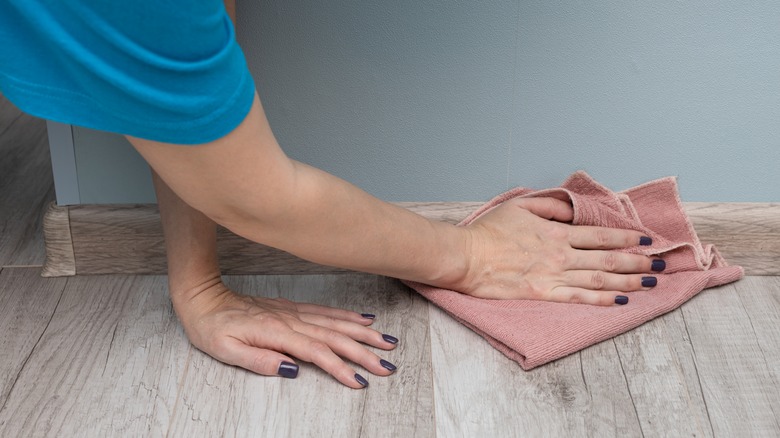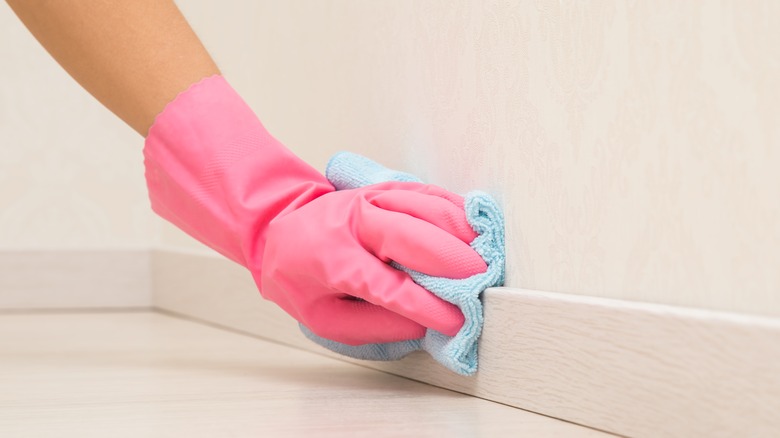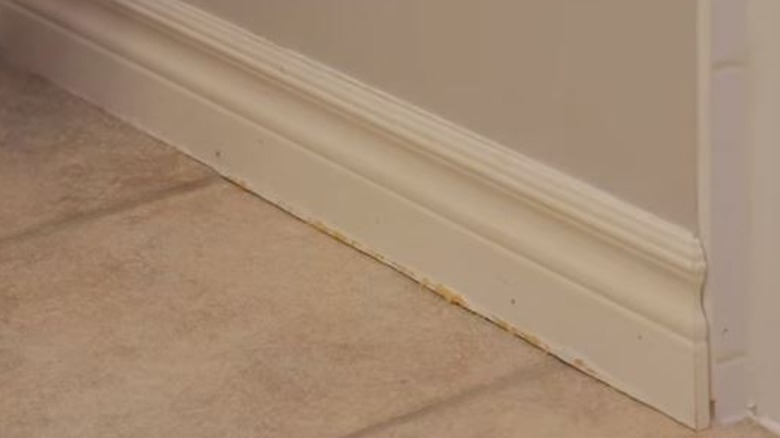The Biggest Mistakes You Can Make When Cleaning Your Baseboards
Although baseboards don't get dirty as quickly as floors and countertops, they still benefit from being cleaned on a regular basis. But what's the best way to clean them? Choosing which way is "best" is subjective, of course, but some methods are more effective than others. If you want your baseboards cleaned thoroughly and safely, make sure you're using the right cleaning agent and tool, such as a microfiber cloth. You should also be mindful of how much water you use during the cleaning process.
There are dozens of articles and videos online for how to clean baseboards "the right way," but many don't provide insight into some mistakes you might be making. For starters, you can damage the boards by using a cleaning agent or tool that's too harsh. Using an excessive amount of water or not drying the boards properly afterward can also be a mistake and negatively alter the appearance of the baseboards.
Using the wrong cleaning agent or tool
You might use bleach to clean your floors, but that doesn't mean you should use it on your baseboards, most of which are made out of solid wood. Over time, bleach can chemically deteriorate the wood structure, leaving you with cracks and holes. Even if the baseboards are painted, bleach and other harsh chemicals can still do damage. Bleach is corrosive, which means it weakens certain surfaces by destroying them on a chemical level.
Using the wrong tool or cloth to clean your baseboards can also be a mistake. Just as with any other surface, there are many options for what you can use to clean a baseboard. You can use a microfiber cloth and wipe it by hand or use the same mop you use on your floors, eliminating the need to bend over. A baseboard cleaning tool, available in home goods stores or online, is also an option for safe, non-damaging cleaning. What you don't want to use is any tool or item that can scrape the paint off your boards, or that can damage the wood. Avoid scouring pads and other abrasive items. If there's buildup on your baseboards that a soft cloth or mop alone can't remove, opt for a non-scratch cleaning brush instead.
Using too much water or not drying the boards properly
Water has the power to cleanse and satiate, but it can also be destructive to many different areas in a home, including floors and baseboards. Houses that flood after a heavy rainfall or hurricane often have to be gutted because water weakens drywall and can lead to mold problems. Although your baseboards obviously won't come in contact with the same amount of water as they would in a flooded home, there's still a damage risk if you use too much water during cleaning – such as a sopping wet mop.
It may seem logical to conclude that using one to clean your baseboards will provide faster, more efficient results, but the risks of using a wet mop aren't worth the reward. The excessive water can easily drip off the mop and behind or under the baseboards, which can cause them to swell. It can also cause the paint to peel off. If you're using a mop, starting with a damp one is best. Then add more water gradually as needed, but the mop should never be dripping with water.
If you accidentally use too much water at any point, or even if you don't, remember to dry the baseboards to prevent damage and streaks. Use a clean, dry towel, and make sure to dry the top and bottom portions of the boards.


